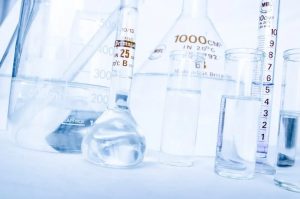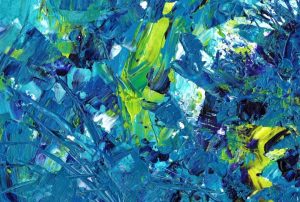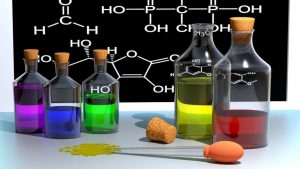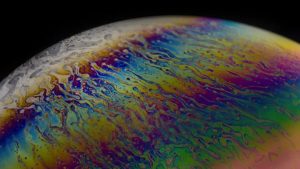Enhancers for Coatings/Inks/Adhesives

SAA-100™: Enhancer for Coatings/Inks/Adhesives SAA-100™ serves as both an additive and a modification monomer for resin graft synthesis.
Since its invention in 1952, SAA-100™, a unique hydroxyl-containing polymer, and its derivatives have found wide applications in the coatings, inks, and adhesives industries.

Product Technical Parameters and Characteristics
| Appearance | White flake solid |
| Molecular Weight | 1500-3000 |
| Hydroxyl Value (mg KOH/g) | 210 |
| Hydroxyl Content (%) | 6.4 |
| Acid Value | <0.1 |
| Tg (Glass Transition Temperature), ℃ | 62 |
| Softening Point, ℃ | 100-110 |
| Melting Viscosity (120℃) | 165 |
| Melting Viscosity (140℃) | 18 |
| Color (30% solution in MEK, APHA) | 70 |
The molecular structure of SAA-100™ contains both hydrophobic aromatic groups and hydrophilic hydroxyl groups.
Characteristics of SAA-100™
- Solid particles, easy for transportation and utilization;
- Excellent compatibility with most resins or monomers;
- Very low viscosity after dissolution or melting, suitable for high solid-low viscosity systems and powder coatings;
- Accelerates solvent release, enhancing drying speed;
- Improves flow and leveling;
- Increases crosslink density for improved hardness, water resistance, stain resistance, and chemical resistance;
- Enhances gloss;
- Improves adhesion to wood, metal, paper, and some plastics;
- Wash and scrub resistance;
- Improves wetting and color development of pigments.

Applications of SAA-100™ in Coatings, Inks, and Adhesives
Wood Coatings
SAA-100™ is used as an additive in nitro, acid-curing, and polyurethane wood coatings for cabinets and furniture. It can improve hardness, gloss, and chemical resistance (especially against detergent scrubbing), and the accelerated curing process can expedite production line operation. SAA-100™ can also be used in wood sealer primers as a thermoplastic hard resin to enhance stain and water resistance.
Example: Testing of SAA-100™ in acid-curing wood coatings for drying speed, hardness, and stain resistance:
Industrial Coatings
SAA-100™ exhibits excellent performance in appliance coatings, 3C coatings, coil coatings, and industrial baking finishes, showing better resistance to pollution, detergent erosion, chemical corrosion, smoothness, gloss, color vividness, wet and dry adhesion, and hardness.
Automotive Coatings
In automotive refinish coatings, SAA-100™ improves drying time, enhances gloss and hardness, promotes adhesion, and corrosion resistance. Derivatives of SAA-100™ improve adhesion and leveling in automotive e-coat primers and increase corrosion resistance.
UV-Curable Coatings
SAA-100™ can be dissolved in active diluent monomers to reduce coating viscosity, improve flow and leveling, increase substrate wetting, enhance reactivity, crosslink density, interlayer adhesion, and flexibility.
Powder Coatings
Certain characteristics of SAA-100™ (such as high Tg, low melting viscosity) are particularly suitable for powder coatings. It reduces viscosity during production, improves flow and leveling, enhances gloss, hardness, adhesion, detergent erosion resistance, and hydrolysis resistance.
Pigment Pastes and Colorants
SAA-100™ can act as a dispersing carrier for pigment pastes and colorants. It assists in pigment dispersion, increases flowability, improves water resistance and gloss, and enhances powder stability.
Inks In high-performance inks (such as inkjet, screen printing, gravure, flexographic, and ballpoint pen inks), SAA-100™ improves gloss, abrasion resistance, and diffusion resistance, enhances adhesion and color vibrancy on plastics and aluminum foils, increases water resistance and stain resistance, accelerates drying, and achieves a balance between hardness and flexibility.
Adhesives
Adhesives In solvent-based polyurethane and hot melt polyurethane adhesives, SAA-100™ accelerates curing speed, improves adhesion to metals, wood, glass, and some plastics, balances hardness and flexibility, enhances mechanical and aging properties. Derivatives of SAA-100™ resins can be used in water-based polyurethane adhesives.

Applications of SAA-100™ Derivative Polymers
SAA-100™ can be used not only as an additive for coatings, inks, and adhesives but also as a modification monomer for solvent-based and water-based resin synthesis. Known applications include reactions with fatty acids, diacids or polyacids, isocyanates, acrylic acids, rosin resins, phenolic resins, etc., to produce alcohol acids, polyesters, polyurethanes, acrylics, rosins, UV-curable, phenolics, and other SAA-100™ derivative resins.
Below, we introduce the performance of SAA-100™ derivative resin in the water-based industry, which has been widely used in water-based coatings, waterborne electrophoretic paints, water-based flexographic inks, water-based UV curing, and water-based polyurethane adhesives.
The principle of developing water-based SAA-100™ derivative resin is to incorporate carboxylic acid groups, followed by neutralization with ammonia to form ammonium salts. There are two main methods to introduce carboxylic acid functional groups: 1) reacting with maleic anhydride, and 2) grafting onto acidic acrylic polymers.

Water-Based Coatings
Water-based derivatives of SAA-100™ modified polyesters impart high-performance value to water-based air-dry and thermosetting coatings, providing excellent adhesion and anti-pollution properties.
- Reference Method 1: SAA-100™ and tall oil fatty acids react in the presence of a solvent. After solvent removal, the mixture is reacted with maleic anhydride. Then, the SAA-100™ adduct is poured into a mixture of water/morpholine for neutralization. [U.S. Patent 3,293,201 PPG (1966)]
- Reference Method 2: SAA-100™ and tall oil fatty acids react in the presence of a solvent. Then, a premixture composed of styrene, acrylic acid, and a polymerization initiator (peroxide) is added dropwise. Finally, dimethyl ethanolamine is added to neutralize the acidity in the copolymer. The resulting product is a polymer solution in solvent, soluble in water due to salt formation. Acrylic polymers are expected to graft onto the methylene groups between two unsaturated bonds. [U.S. Patent 4,257,933 Sherwin Williams (1981)]
The stability of water-based systems depends on the carboxylic acid group content in the polymer. Therefore, both of the above methods can be used continuously.
- Reference Method 3: SAA-100™ and a mixture of fatty acids containing linoleic acid react in the presence of a solvent. The resulting “ester” is then reacted with maleic anhydride. After the reaction, ethylene glycol monobutyl ether is added. Finally, a premixture composed of styrene, methyl methacrylate, acrylic acid, and methyl methacrylate is added dropwise, along with a polymerization initiator (peroxide). The final product can be neutralized with diisopropanolamine aqueous solution. Acrylic copolymers are grafted onto the methylene between two unsaturated bonds in the fatty acid ester structure, as well as on the maleic anhydride structure. [U.S. Patent 4,221,647 Lilly Industries (1980)]
- Reference Method 4: SAA-100™ first reacts with vegetable oil fatty acids (soybean oil fatty acids), then maleic anhydride and trimellitic anhydride (more popular due to three carboxyl functional groups) are added. A premixture composed of hydroxyethyl acrylate, methyl methacrylate, methyl acrylate, styrene, and methyl methacrylate is added dropwise along with a polymerization initiator (peroxide). Acrylic polymer structures can be grafted at two positions: on the unsaturated butenoic acid and on the α-methylene between unsaturated fatty acids. [U.S. Patent 4,735,995 Sherwin Williams (1988)]

Waterborne Electrophoretic Paints
Water-based derivatives of SAA-100™ modified polyester resins can serve as hydrolysis-stable resins in electrophoretic coatings. They can be cured or cross-linked at room temperature with polyamide resins, phenolic resins, or polyisocyanates, forming coatings with excellent adhesion.
- Anodic Electrophoresis:
- A terpolymer of maleic acid tall oil fatty acid and SAA-100™ is prepared, with a curing agent being a phenolic resin (acrylic ether phenolic resin). The coating is cured at 160°C for 45 minutes. [U.S. Patent 3,663,405 PPG (1972), U.S. Patent 3,932,191 PPG (1976)]
- A terpolymer of maleic acid linoleic acid and SAA-100™ grafted acrylic copolymer, neutralized with diisopropanolamine, can produce fast-drying electrophoretic paints (drying agent – cobalt cyclohexanecarboxylic acid). The coating dries overnight. [U.S. Patent 4,221,647 Lilly Industries (1980), U.S. Patent 4,263,194 Lilly Industries (1981)]
- A terpolymer of maleic acid linseed oil fatty acid grafted SAA-100™ and an epoxy resin forms a terpolymer with triethylamine salt by reacting with the epoxy groups and hydroxyl groups on the epoxy resin. This electrophoretic coating is air-dried. [U.S. Patent 4,933,380 Kansai Paint (1990)]
- A terpolymer of trimellitic anhydride, castor oil fatty acids (84-94% ricinoleic acid ((R)-12-hydroxy-9-cis-octadecenoic acid)), and SAA-100™ reacts to form a terpolymer with triethylamine. The acid value is reduced by epoxidized butane. The coating is cured at 160°C for 30 minutes. [U.S. Patent 3,650,998 De Soto (1972)]
- SAA-100™ is emulsified in the water phase using a hydroxy-functional polypropylene acrylic copolymer (composed of styrene, octyl acrylate, acrylic acid, and hydroxyethyl methacrylate). The curing agent is a butylated melamine formaldehyde resin. The coating is cured at 190°C for 30 minutes. [U.S. Patent 3,978,015 Valspar (1976)]
- Cathodic Electrophoresis: A vinylidene chloride copolymer with ethylene diamine polyamide – amine dendrimer and SAA-100™ grafted maleic acid tall oil fatty acid ester acetate derivative is used. The curing agent in this formulation is a blocked TDI. The coating is cured at 180°C for 20 minutes. [U.S. Patent 3,799,854 PPG (1974)]
Electroplating
The composition of the electroplating solution includes:
- A metal salt (a mixture of sulfate and borate chloride salts),
- Resin dispersion (SAA-100™ dispersed in cationic surfactants),
- Cationic surfactant (e.g., cetyltrimethylammonium bromide),
Nonionic surfactant (e.g., octylphenyl ether).



